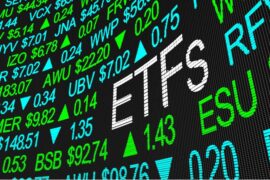This article may contain references to products or services from one or more of our advertisers or partners. We may receive compensation when you click on links to those products or services. Nonetheless, our opinions are our own.
The information presented in this article is accurate to the best of our knowledge at the time of publication. However, information is subject to change, and no guarantees are made about the continued accuracy or completeness of this content after its publication date.
Bitcoin markets demand visual and data-driven analysis tools. BTC heatmaps can provide an idea of liquidity areas, and technical indicators can show momentum, trend strength, and volatility. By combining these tools, traders can validate signals, filter noise, and improve decision-making. In this article, we discuss effective ways to overlay BTC heatmaps with technical indicators to perform more precise and efficient market analysis.
Understanding BTC heatmaps
BTC heatmaps dynamically illustrate market depth and liquidity across time. They use color gradients to show the concentration of buy and sell orders at various price levels, enabling analysts to determine possible areas of support and resistance. The vertical axis of these maps usually shows price, and the horizontal axis shows time, with areas of intensity indicating the number of orders waiting in the order book. A trader can look through a heatmap and speculate where massive groupings of orders could soak up or speed up price action. Heatmaps combine historical data to depict areas of persistent liquidity, unlike the quickly changing traditional order book snapshots. This method emphasizes areas where order activity has a tendency to build up persistently, showing the collective market sentiment and possible reversal areas. These visual cues are critical to merging heatmap insights with technical indicators. Once these clusters of order concentration are understood, technical analysis can be used to reference these areas to enhance trading strategy decision-making and timing.
Overview of technical indicators
Technical indicators are mathematical formulas that calculate price and volume data to determine market conditions. Moving averages, relative strength index (RSI), Bollinger Bands, and MACD are common examples. They all provide varying views: moving averages help to smooth price data and identify underlying trends, RSI indicates momentum and possible overbought or oversold states, Bollinger Bands indicate volatility, and MACD indicates trend and momentum changes. In practice, traders frequently choose multiple indicators to confirm signals, minimize false alarms, and verify trend polarity. To interpret them properly, it is necessary to understand the parameters of each indicator (period length or smoothing factor) and their limitations (no indicator can ensure accurate entry or exit points). Analysts can build a foundation of more advanced methodologies by mastering the calculation and interpretation of key indicators. These metrics can then easily be combined with BTC heatmap visuals, where indicator signals may be overlaid on top of liquidity maps to give a two-layer perspective on market activity.
Synergizing heatmap data with indicators
By overlaying the BTC heatmap with technical indicators, it is possible to build a synergistic framework that capitalizes on the advantages of both methods. Heatmaps can show areas of the price where there is substantial liquidity, and indicators can provide quantitative signals regarding momentum direction and volatility. The ability to overlay indicators on heatmaps enables traders to validate that an indicator signal coincides with a high liquidity area. An example is that a bullish crossing of moving averages is more valid when it takes place in a high-liquidity support zone. On the other hand, bearish divergence in RSI would be a concern when combined with a crowded sell-pressure cluster on the heatmap. This two-fold confirmation eliminates weak signals and emphasizes high-likelihood setups. To operationalize such interaction, analysts may overlay indicator values and heatmap layers on a common charting platform or employ alerting systems that activate when both conditions fall within specified limits. The outcome is a stronger analytical process that marries visual intuition with statistical rigor.
Implementing moving averages and heatmaps
Moving averages (MA) represent one of the oldest but most popular technical indicators. Traders also watch crossovers of short-term moving averages with long-term moving averages to indicate a change in trend. Analysts must be mindful of the alignment of these events with liquidity clusters when combining MA crossovers with BTC heatmaps. To illustrate, a crossover of a 20-period MA above a 50-period MA in a congested area of the heatmap supports a more bullish bias than the same crossover in a low-liquidity area. Likewise, a price retracement that reaches a major heatmap support area prior to the confirmation of the MAs could offer a lower-risk entry. MA lines and heatmap intensity can be overlaid on charting platforms with customizable layers and used to backtest historical trends visually. Concentrating MA signals in high liquidity areas, traders can minimize false breakout risk and enhance the statistical legitimacy of moving average strategies.
Combining RSI signals with heatmap analysis
The relative strength index (RSI) is a momentum oscillator that tracks the rate of change and velocity of the price movement. An RSI value greater than 70 suggests an overbought market, whereas a value of less than 30 depicts an oversold market. To combine RSI with BTC heatmaps, one would correlate these momentum extremes with liquidity zones. RSI reaching the oversold region at a heatmap support cluster can indicate a potential optimal time to buy. On the other hand, an overbought RSI level at a dense resistance heatmap level may be a sign of an upcoming reversal. Traders are able to set conditional alerts that are activated when RSI crosses threshold levels in the defined ranges of heatmap intensities. This method minimizes false signals when order volume is low and improves timing precision. In the long run, analysts can optimize RSI settings, including varying the look-back period, and adjust the heatmap sensitivity levels to their risk tolerance and timeframe preferences.
Developing a comprehensive trading strategy
By incorporating the knowledge of BTC heatmaps and technical indicators into a consistent picture, a well-disciplined approach to trading can be developed. Traders first establish their risk parameters: entry, exit, and stop-loss rules, depending on indicator levels and heatmap liquidity levels. They then back test the composite system over historical data, confirming that trades taken where the indicator generates a signal and in high-liquidity areas provide good risk-reward ratios. The capital allocation rules can then be tuned to give preference to setups with dual confirmation. Also, position sizing/scaling models must consider heatmap order depth; larger clusters can support larger positions with less slippage risk. Lastly, the strategy is maintained flexible to changing market situations through continuous monitoring of performance and regular optimization of parameters. When traders approach BTC heatmaps and technical indicators as one part of a larger system, as opposed to separate curated systems, they develop a rigorous, data-driven framework that can navigate the volatility with more certainty.
Combining the BTC heatmaps with technical indicators provides a more holistic structure to traders requiring more in-depth market analysis. Analysts can improve entry and exit points by combining quantitative signals with visual inspection of liquidity patterns. This integrated solution minimizes guesswork and improves time precision. Combining the two tools allows a more informed and flexible trading approach that can adapt to more complex price behaviour and changing market environments.

Reviewed and edited by Albert Fang.
See a typo or want to suggest an edit/revision to the content? Use the contact us form to provide feedback.
At FangWallet, we value editorial integrity and open collaboration in curating quality content for readers to enjoy. Much appreciated for the assist.
Did you like our article and find it insightful? We encourage sharing the article link with family and friends to benefit as well - better yet, sharing on social media. Thank you for the support! 🍉
Article Title: Integrating BTC heatmaps with technical indicators for better analysis
https://fangwallet.com/2025/08/04/integrating-btc-heatmaps-with-technical-indicators-for-better-analysis/The FangWallet Promise
FangWallet is an editorially independent resource - founded on breaking down challenging financial concepts for anyone to understand since 2014. While we adhere to editorial integrity, note that this post may contain references to products from our partners.
The FangWallet promise is always to have your best interest in mind and be transparent and honest about the financial picture.
Become an Insider

Subscribe to get a free daily budget planner printable to help get your money on track!
Make passive money the right way. No spam.
Editorial Disclaimer: The editorial content on this page is not provided by any of the companies mentioned. The opinions expressed here are the author's alone.
The content of this website is for informational purposes only and does not represent investment advice, or an offer or solicitation to buy or sell any security, investment, or product. Investors are encouraged to do their own due diligence, and, if necessary, consult professional advising before making any investment decisions. Investing involves a high degree of risk, and financial losses may occur including the potential loss of principal.
Source Citation References:
+ Inspo
There are no additional citations or references to note for this article at this time.












































